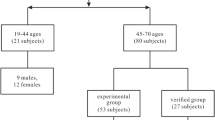Abstract.
Involvement of the brain is one of the most important complications of systemic lupus erythematosus (SLE); however, its diagnosis is difficult due to the lack of effective imaging methods. We combined three brain imaging modalities – positron emission tomography with fluorine-18 2-fluoro-2-deoxy-d-glucose (FDG-PET), single-photon emission computed tomography with technetium-99m hexamethylpropylene amine oxime (HMPAO-SPET) and magnetic resonance imaging (MRI) – in order to detect brain involvement in SLE. Thirty-seven SLE patients, aged 22–45 years, were divided into three groups. Group 1 (G1) consisted of ten patients with major neuropsychiatric manifestations; group 2 (G2) consisted of 15 patients with minor manifestations; and group 3 (G3) consisted of 12 patients without manifestations. FDG-PET findings were abnormal in 51% of patients: 90% of G1, 67% of G2 and 0% of G3 patients respectively. HMPAO-SPET findings were abnormal in 62% of patients: 100% of G1, 73% of G2 and 17% of G3 patients respectively. MRI findings were abnormal in 35% of patients: 70% of G1, 40% of G2 and 0% of G3 patients respectively. Grey matter was more commonly involved than white matter; 62% of patients presented with lesions in the cerebral cortex, 27% with lesions in the basal ganglion, 5% with lesions in the cerebellum, and 19% with lesions in white matter. No white matter lesions were found on FDG-PET or HMPAO-SPET. However, in 19% of patients, MRI demonstrated abnormally high signal lesions in white matter. Forty-three percent of cases had positive serum anticardiolipin antibodies (ACA). However, ACA was not related to FDG-PET, HMPAO-SPET or MRI findings. It may be concluding that HMPAO-SPET is a more sensitive tool for detecting brain involvement in SLE patients when compared with FDG-PET or MRI. However, MRI is necessary for detecting lesions in white matter.
Similar content being viewed by others

Author information
Authors and Affiliations
Additional information
Received 7 September and in revised form 9 October 1998
Rights and permissions
About this article
Cite this article
Kao, CH., Lan, JL., ChangLai, SP. et al. The role of FDG-PET, HMPAO-SPET and MRI in the detection of brain involvement in patients with systemic lupus erythematosus. Eur J Nucl Med 26, 129–134 (1999). https://doi.org/10.1007/s002590050368
Issue Date:
DOI: https://doi.org/10.1007/s002590050368



